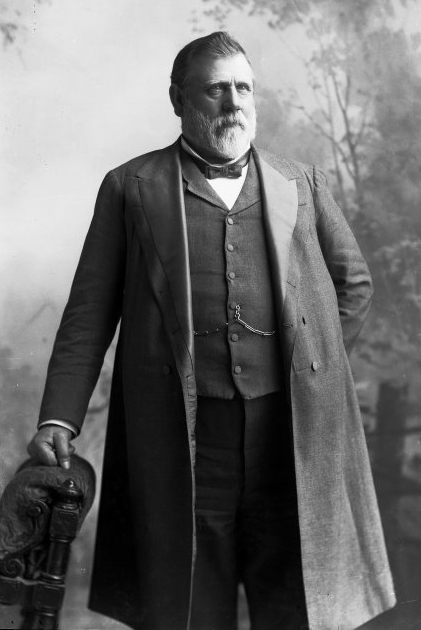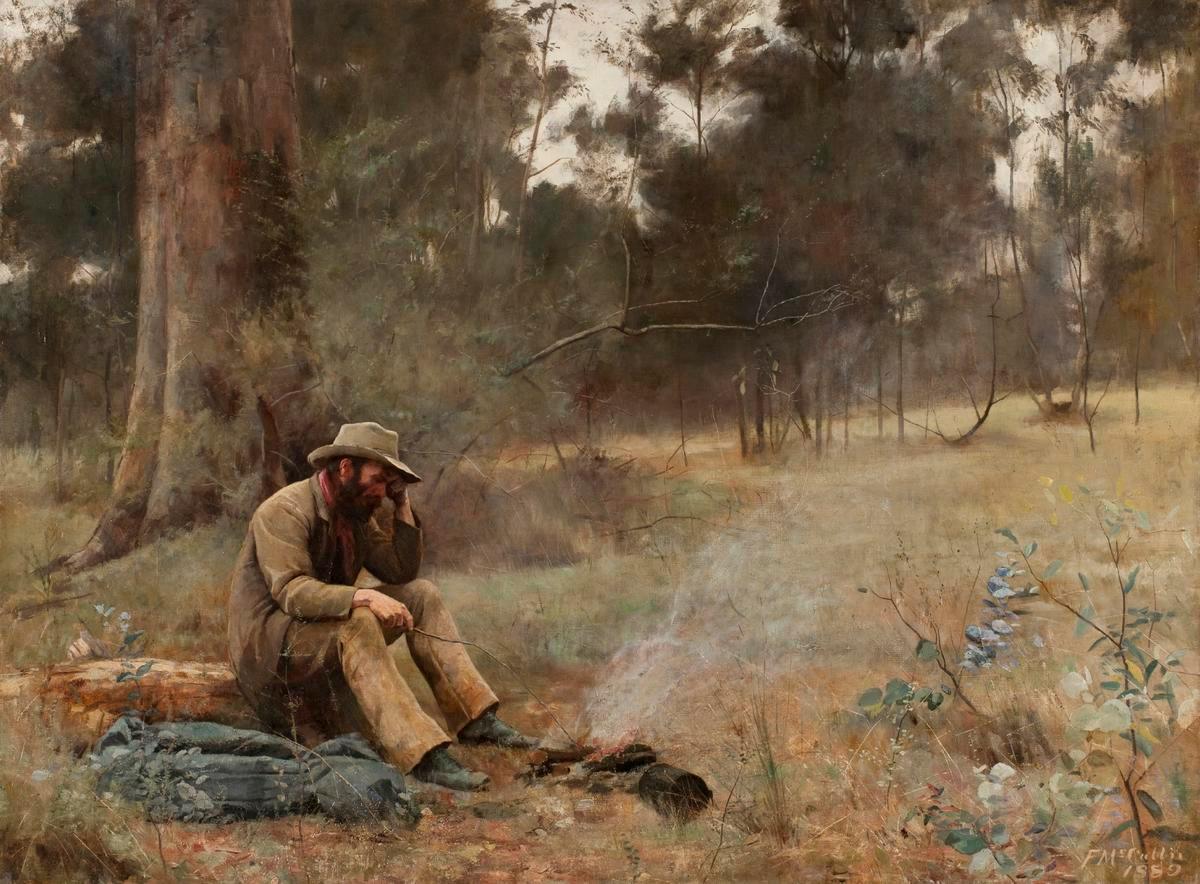|
Maungakawa
Maungakawa is located in the Waipa District, in the present-day Te Miro settlement, northeast of the town of Cambridge, New Zealand. It was once the meeting place of the Kauhanganui, the parliament of the Kīngitanga and Waikato Tainui government. History During the 1860s Maungakawa had a population of several hundred. In 1868 was bought, or leased from Māori owners by Daniel Thornton, and, after his death, a large house was put on what was later called Sanatorium Hill. In 1891 a building, called the ''Maori Parliament Building'', was opened by Māori King Tawhiao. The opening was attended by between 4,000 and 5,000. After returning from England after failing to have an audience with Queen Victoria, King Tawhiao convened a Māori parliament at Maungakawa in 1894. Māori travelled from all across the country for this parliament. Sanatorium Te Waikato Sanatorium for tuberculosis was officially opened in 1903 by New Zealand Liberal Party, Liberal Prime Minister, Joseph Ward, Sir ... [...More Info...] [...Related Items...] OR: [Wikipedia] [Google] [Baidu] |
Te Miro
Te Miro is an area in the Waipā District of the Waikato Region of the North Island of New Zealand. Te Miro is situated 31 kilometres east southeast of Hamilton, and 24 kilometres northeast of Cambridge. History The name Te Miro for the area first became used in 1916, when it was surveyed and developed for European settlement. Translations of the Maori word ''miro'' are a twist, or alternatively a torrent of water, which may have originated from the many streams that twist through the hills of the area. Prior to that, the area was known as Maungakawa. The first Maori Pā settlement in the Te Miro area was by the Ngāti Hauā people at Te Kawehitiki (37 49 20; 175 34 50), located on the lower reaches of the Maungakawa volcanic cone, which is on the present day Hopehill farm,Hewitt, Joslyn (1995). ''Te Miro a history book to commemorate the 75th school and district reunion 1975''. Te Miro. at 789 Te Miro Road. There is a history of large Maori gatherings beginning at the site in t ... [...More Info...] [...Related Items...] OR: [Wikipedia] [Google] [Baidu] |
Kauhanganui
The Whakakitenga, formerly known as the Kauhanganui, is the governing council of the Waikato Tainui tribal confederation in New Zealand. It is structured as a bicameral parliament, and members are elected for three year terms, with each marae electing two members. The parliament was established by King Tāwhiao of the Kīngitanga in 1889 or 1890. Background Te Kauhanganui was originally established at Maungakawa, located in the present day settlement of Te Miro, near Cambridge. It was founded by Tāwhiao after his proposal to set up a pan-Māori parliament in New Zealand to complement the colonial legislative council was denied by Auckland authorities. The parliament's members consisted of tribally appointed delegates who advised King Tāwhiao on policy and was used by him to communicate with his subjects. The Kauhanganui remains in existence today, and currently serves as the governing council of the modern Waikato Tainui tribal government. It is headed by 204 tribal memb ... [...More Info...] [...Related Items...] OR: [Wikipedia] [Google] [Baidu] |
New Zealand Liberal Party
The New Zealand Liberal Party () was the first organised political party in New Zealand. It governed from 1891 until 1912. The Liberal strategy was to create a large class of small land-owning farmers who supported Liberal ideals, by buying large tracts of Māori land and selling it to small farmers on credit. The Liberal Government also established the basis of the later welfare state, with old age pensions, developed a system for settling industrial disputes, which was accepted by both employers and trade unions. In 1893 it extended voting rights to women, making New Zealand the first country in the world to enact universal adult suffrage. The Liberal Party became extremely successful, winning seven consecutive elections and the popular vote in each. New Zealand gained international attention for the Liberal reforms, especially how the state regulated labour relations. It was innovating in the areas of maximum hour regulations and compulsory arbitration procedures. Und ... [...More Info...] [...Related Items...] OR: [Wikipedia] [Google] [Baidu] |
Mount Ruapehu
Mount Ruapehu (; English ) is an active stratovolcano at the southern end of the Taupō Volcanic Zone and North Island North Island Volcanic Plateau, volcanic plateau in New Zealand. It is northeast of Ohakune and southwest of the southern shore of Lake Taupō, within Tongariro National Park. The North Island's major ski resorts and only glaciers are on its slopes. Ruapehu, the largest active volcano in New Zealand, has the highest point in the North Island and has three major peaks: Tahurangi (2,797 m), Te Heuheu (2,755 m) and Paretetaitonga (2,751 m). The deep, active volcanic crater, crater is between the peaks and fills with water between major eruptions, being known as Crater Lake (). The name ''Ruapehu'' means "pit of noise" or "exploding pit" in Māori language, Māori. Geography Ruapehu is located in the centre of the North Island of New Zealand, northeast of Ohakune, New Zealand, and southwest of the southern shore of Lake Taupō, within Tongariro ... [...More Info...] [...Related Items...] OR: [Wikipedia] [Google] [Baidu] |
The Bush
"The bush" is a term mostly used in the English vernacular of Australia, New Zealand and South Africa, where it is largely synonymous with hinterlands or backwoods. The fauna and flora contained within the bush is typically native to the region, although exotic species may also be present. The expression has been in use in Australia from the earliest years of British settlement, and it has inspired many derivative Australian English terms, such as bush tucker, bush ballad and bushranger. The term is also widely used in Canada and the American state of Alaska to refer to the large, forested portions of their landscapes. Usage by country Australia The concept of "the bush" has become iconic in Australia. In reference to the landscape, "bush" refers to any sparsely inhabited region, regardless of vegetation. "The bush" in this sense was something that was uniquely Australian and very different from the green European landscapes familiar to many new immigrants. The term "Outba ... [...More Info...] [...Related Items...] OR: [Wikipedia] [Google] [Baidu] |
James Parr (politician)
Sir Christopher James Parr (18 May 1869 – 2 May 1941) was a New Zealand lawyer and politician of the Reform Party. He was Mayor of Auckland, a Member of Parliament representing the Eden electorate, a Minister in the Reform Government, High Commissioner in London and a Member of the New Zealand Legislative Council. Early life Parr was born in Pukerimu near Cambridge in 1869. Parr's family moved to Waihou and went to school there. He received education in Thames, Auckland Grammar School, and Auckland University College. Parr studied law and was admitted to the Bar in 1890. He practiced in Coromandel and Auckland. Political career Parr was Mayor of Auckland. He represented the electorate of Eden from 1914 to 1926. He was Minister of Education (3 April 1920 – 24 April 1926) in three successive ministries of the Reform Government. He was Minister of Public Health (3 April 1920 – 27 June 1923) under William Massey. He was Minister of Justice (27 June 1923 – ... [...More Info...] [...Related Items...] OR: [Wikipedia] [Google] [Baidu] |
William Massey
William Ferguson Massey (26 March 1856 – 10 May 1925) was a politician who served as the 19th prime minister of New Zealand from May 1912 to May 1925. He was the founding leader of the Reform Party, New Zealand's second organised political party, from 1909 until his death. Massey was born in County Londonderry in Ireland. After migrating to New Zealand in 1870, Massey farmed near Auckland (earning his later nickname, ''Farmer Bill'') and assumed leadership in farmers' organisations. He entered parliament in 1894 as a conservative, and from 1894 to 1912 was a leader of the conservative opposition to the Liberal ministries of Richard Seddon and Joseph Ward. Massey became the first Reform Party Prime Minister after he led a successful motion of no confidence against the Liberal government. Throughout his political career Massey was known for the particular support he showed for agrarian interests, as well as his opposition to organised labour. He pledged New Zealand's suppo ... [...More Info...] [...Related Items...] OR: [Wikipedia] [Google] [Baidu] |
Joseph Ward
Sir Joseph George Ward, 1st Baronet, (26 April 1856 – 8 July 1930) was a New Zealand politician who served as the 17th prime minister of New Zealand from 1906 to 1912 and from 1928 to 1930. He was a dominant figure in the New Zealand Liberal Party, Liberal and United Party (New Zealand), United List of New Zealand ministries, ministries of the late 19th and early 20th centuries. Ward was born into an Irish Catholic family in Melbourne, Victoria. In 1863, financial hardship forced his family to move to New Zealand, where he completed his education. Ward established a successful grain trade in Invercargill in 1877 and soon became prominent in local politics. He became a Member of Parliament in 1887. Following the election of the Liberal Government of New Zealand, Liberal Government in 1891, Ward was appointed as Postmaster-General (New Zealand), Postmaster-General under John Ballance; he was promoted to Minister of Finance (New Zealand), Minister of Finance in the succeeding ... [...More Info...] [...Related Items...] OR: [Wikipedia] [Google] [Baidu] |
Queen Victoria
Victoria (Alexandrina Victoria; 24 May 1819 – 22 January 1901) was Queen of the United Kingdom of Great Britain and Ireland from 20 June 1837 until Death and state funeral of Queen Victoria, her death in January 1901. Her reign of 63 years and 216 days, which was List of monarchs in Britain by length of reign, longer than those of any of her predecessors, constituted the Victorian era. It was a period of industrial, political, scientific, and military change within the United Kingdom of Great Britain and Ireland, United Kingdom, and was marked by a great expansion of the British Empire. In 1876, the British parliament voted to grant her the additional title of Empress of India. Victoria was the daughter of Prince Edward, Duke of Kent and Strathearn (the fourth son of King George III), and Princess Victoria of Saxe-Coburg-Saalfeld. After the deaths of her father and grandfather in 1820, she was Kensington System, raised under close supervision by her mother and her Comptrol ... [...More Info...] [...Related Items...] OR: [Wikipedia] [Google] [Baidu] |
Tuberculosis
Tuberculosis (TB), also known colloquially as the "white death", or historically as consumption, is a contagious disease usually caused by ''Mycobacterium tuberculosis'' (MTB) bacteria. Tuberculosis generally affects the lungs, but it can also affect other parts of the body. Most infections show no symptoms, in which case it is known as inactive or latent tuberculosis. A small proportion of latent infections progress to active disease that, if left untreated, can be fatal. Typical symptoms of active TB are chronic cough with hemoptysis, blood-containing sputum, mucus, fever, night sweats, and weight loss. Infection of other organs can cause a wide range of symptoms. Tuberculosis is Human-to-human transmission, spread from one person to the next Airborne disease, through the air when people who have active TB in their lungs cough, spit, speak, or sneeze. People with latent TB do not spread the disease. A latent infection is more likely to become active in those with weakened I ... [...More Info...] [...Related Items...] OR: [Wikipedia] [Google] [Baidu] |









